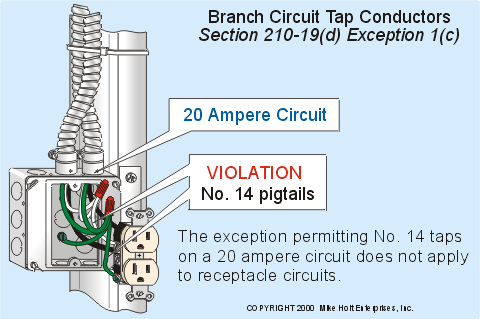Re: BRANCH CIRCIUT SIZING TO AVOID VOLTAGE DROP
Chicar, just because somebody is not familiar with a wiring method is not just cause to have it judged a violation. There are homes that rival commercial buildings in size and would have the same needs as far as voltage drop considerations.
A person who would use an argument such as "show me where it is allowed" when he can not provide back up to his call, simply has no business acting as an inspector.
If I wanted to have a more energy efficient house wired with large conductors, but reduced to allowed ampacity at the devices, I would like for an inspector tell me why I couldn't do it.
Roger
[ April 25, 2004, 03:14 PM: Message edited by: roger ]
Chicar, just because somebody is not familiar with a wiring method is not just cause to have it judged a violation. There are homes that rival commercial buildings in size and would have the same needs as far as voltage drop considerations.
A person who would use an argument such as "show me where it is allowed" when he can not provide back up to his call, simply has no business acting as an inspector.
If I wanted to have a more energy efficient house wired with large conductors, but reduced to allowed ampacity at the devices, I would like for an inspector tell me why I couldn't do it.
Roger
[ April 25, 2004, 03:14 PM: Message edited by: roger ]


